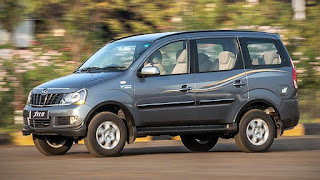Driver–Strategy Matrix Construction
Driver–Strategy Matrix Construction
In the obtained matrixX, each row corre-sponds to one taxi, and each column corresponds to the servicestrategy in a specific time slot and/or for a specific grid cell. Inthe next section, the analysis of taxi service strategies is basedon this feature matrix.https://srisivasakthitravels.com/
In this section, we will leverage the driver–strategy matrix toinvestigate the taxi drivers’ service strategies. Specifically, twostudies are conducted: 1) We attempt to uncover effective taxiservice strategies and validate their effectiveness in classifyinggood and ordinary taxi drivers. The discovered service strate-gies can be used as guidance for taxi drivers. 2) We estimateindividual taxi drivers’ revenues based on their taxi servicestrategies. This result can be used to predict a driver’s futureperformance based on the historical driving behaviors.A. Discovering Good Taxi Service StrategiesFor service strategy vector shown in each column of thedriver–strategy matrix, we evaluate its impact on taxi drivers’performance by computing its correlation with the revenue ofthe corresponding taxi drivers. A positive correlation valueindicates that this strategy generally brings benefits to drivers’performance, whereas a negative value indicates that the strat-egy will not help.
In the following, we study the impact of thethree types of strategies.
1) Passenger-Searching Strategies:To understand how dif-ferent passenger-searching strategies would affect the drivers’revenues generated, we fix the grid cell ID, as shown in Fig. 8(same as the ID numbers in the bottom figure of Fig. 5),then compute the correlation between each passenger-searchingstrategy vector at a specific grid cell and time slot after droppingoff passengers and the generated revenues. For the sake ofsimplicity and clarity, we choose three groups of locations (gridcells) for detailed study, according to the accumulated drop-offdensity. The first group (Group 1) is composed of grid cellsthat are ranked top 1–10 through all time slots (marked in bluein Fig. 8). The second group (Group 2) is composed of gridcells that are ranked between 40 and 70 through all time slots,marked in orange color. The last group (Group 3) is composedof grid cells that are ranked between 71 and 100 through alltime slots, marked in yellow color in Fig. 8.Fig. 9 shows the correlation values of three different servicestrategies for specific locations in different time slots. As shownin Fig. 9, the correlation value for the local hunting strategyis always positive, independent of the time slots and cell loca-tions. Furthermore, for most time slots and cell locations, thecorrelation value of the local hunting strategy is the biggest, as
compared with that of the other two strategies. The results showthat the local hunting strategy always contributes positively tothe revenue; it is usually more effective than the local waitingand going to distant strategies. Interestingly, with the drop-offdensity decreasing, the correlation value of the local huntingstrategy is also decreasing. For instance, the correlation valuefor Group 3 cells is generally smaller than that for Group 2 andGroup 1.For the local waiting strategy, the correlation value canbe negative or positive, depending on the cell locations andtime slots. Generally speaking, the local waiting strategy hasa lower correlation value compared with the other two servicestrategies, except for a few cases such as in airport (see cell ID72 in Fig. 9) at the afternoon time slot. However, it should benoted that revenue estimation is done based on the passenger-delivery distance without considering the fuel cost; thus, thelocal waiting strategy should be suggested to drivers althoughthe correlation value for the other two strategies is slightlybigger than local waiting for those time slots and locations. Forthe case of airport (i.e., cell 72 in Fig. 9), we can see that thecorrelation value of the going distant strategy is significantlybigger than that of the other two strategies in the morningtime slot (06:00–09:59), and the correlation value of the localwaiting strategy is biggest among the three in the afternoontime slot (14:00–17:59). This may be due to the following facts.1) There are few flights reaching the airport in the morningtime slot. 2) The airport is far from hot areas with potentialpassengers. Thus, it is preferable to go back to the downtownafter dropping off passengers in the airport. 3) More flightsarrive at the airport in the afternoon time slot; it is thus moreeffective to wait for new passengers in the airport than to huntfor passengers. Note that there are no correlation values in theairport at late night and evening time slots; this is probablybecause there are few flights leaving or reaching the airportduring these two periods. Thus, the correlation values for allthe three strategies are zero
https://goo.gl/maps/1rNVoifRFQ9snSor6
In the obtained matrixX, each row corre-sponds to one taxi, and each column corresponds to the servicestrategy in a specific time slot and/or for a specific grid cell. Inthe next section, the analysis of taxi service strategies is basedon this feature matrix.https://srisivasakthitravels.com/
In this section, we will leverage the driver–strategy matrix toinvestigate the taxi drivers’ service strategies. Specifically, twostudies are conducted: 1) We attempt to uncover effective taxiservice strategies and validate their effectiveness in classifyinggood and ordinary taxi drivers. The discovered service strate-gies can be used as guidance for taxi drivers. 2) We estimateindividual taxi drivers’ revenues based on their taxi servicestrategies. This result can be used to predict a driver’s futureperformance based on the historical driving behaviors.A. Discovering Good Taxi Service StrategiesFor service strategy vector shown in each column of thedriver–strategy matrix, we evaluate its impact on taxi drivers’performance by computing its correlation with the revenue ofthe corresponding taxi drivers. A positive correlation valueindicates that this strategy generally brings benefits to drivers’performance, whereas a negative value indicates that the strat-egy will not help.
In the following, we study the impact of thethree types of strategies.
1) Passenger-Searching Strategies:To understand how dif-ferent passenger-searching strategies would affect the drivers’revenues generated, we fix the grid cell ID, as shown in Fig. 8(same as the ID numbers in the bottom figure of Fig. 5),then compute the correlation between each passenger-searchingstrategy vector at a specific grid cell and time slot after droppingoff passengers and the generated revenues. For the sake ofsimplicity and clarity, we choose three groups of locations (gridcells) for detailed study, according to the accumulated drop-offdensity. The first group (Group 1) is composed of grid cellsthat are ranked top 1–10 through all time slots (marked in bluein Fig. 8). The second group (Group 2) is composed of gridcells that are ranked between 40 and 70 through all time slots,marked in orange color. The last group (Group 3) is composedof grid cells that are ranked between 71 and 100 through alltime slots, marked in yellow color in Fig. 8.Fig. 9 shows the correlation values of three different servicestrategies for specific locations in different time slots. As shownin Fig. 9, the correlation value for the local hunting strategyis always positive, independent of the time slots and cell loca-tions. Furthermore, for most time slots and cell locations, thecorrelation value of the local hunting strategy is the biggest, as
compared with that of the other two strategies. The results showthat the local hunting strategy always contributes positively tothe revenue; it is usually more effective than the local waitingand going to distant strategies. Interestingly, with the drop-offdensity decreasing, the correlation value of the local huntingstrategy is also decreasing. For instance, the correlation valuefor Group 3 cells is generally smaller than that for Group 2 andGroup 1.For the local waiting strategy, the correlation value canbe negative or positive, depending on the cell locations andtime slots. Generally speaking, the local waiting strategy hasa lower correlation value compared with the other two servicestrategies, except for a few cases such as in airport (see cell ID72 in Fig. 9) at the afternoon time slot. However, it should benoted that revenue estimation is done based on the passenger-delivery distance without considering the fuel cost; thus, thelocal waiting strategy should be suggested to drivers althoughthe correlation value for the other two strategies is slightlybigger than local waiting for those time slots and locations. Forthe case of airport (i.e., cell 72 in Fig. 9), we can see that thecorrelation value of the going distant strategy is significantlybigger than that of the other two strategies in the morningtime slot (06:00–09:59), and the correlation value of the localwaiting strategy is biggest among the three in the afternoontime slot (14:00–17:59). This may be due to the following facts.1) There are few flights reaching the airport in the morningtime slot. 2) The airport is far from hot areas with potentialpassengers. Thus, it is preferable to go back to the downtownafter dropping off passengers in the airport. 3) More flightsarrive at the airport in the afternoon time slot; it is thus moreeffective to wait for new passengers in the airport than to huntfor passengers. Note that there are no correlation values in theairport at late night and evening time slots; this is probablybecause there are few flights leaving or reaching the airportduring these two periods. Thus, the correlation values for allthe three strategies are zero
https://goo.gl/maps/1rNVoifRFQ9snSor6



Comments
Post a Comment